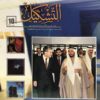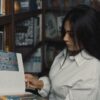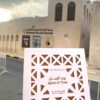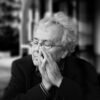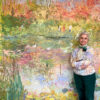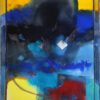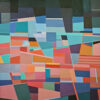Heritage and identity: connections and intersections
In terms of generating knowledge, consolidating identity, and fostering a sense of belonging, heritage is valued as an authentic, cultural, and historical reference. It encompasses intellectual, ethical, material, and industrial achievements that have been integrated over successive generations to form a foundation for every nation, serving as a steadfast base for modern society and future development. Furthermore, heritage plays a pivotal role in interacting with contemporary society and aligning with man’s current requirements and needs.
The awareness of the importance of preserving heritage has been renewed in our contemporary world as it is an integral part of the memory of individuals and nations, which is linked to a global context marked by major transformations on all levels- intellectual, cultural, social, political, and environmental. The pursuit of preserving heritage and utilizing it rationally to take advantage of its present and future benefits lead to the consolidation of individual and collective identity. Heritage is a determinant of identity, which is tantamount to “the awareness of the intersection of affiliations that get ranked under a main affiliation(1),” but there is no doubt that heritage contains creative horizons, which are visually translated into the artistic production of many Emirati artists. The cultural heritage repertoire owned by the United Arab Emirates (UAE) is among the factors that contribute to the artistic and cultural development, including elements of the oral, intangible, and tangible heritage, in addition to the Islamic artistic and cultural heritage…
Heritage in the contemporary Emirati art
Heritage stands as a crucial record that reflects the reality of existence through the ages. Yet, we cannot fully comprehend its significance solely through documents. Firstly, we must acknowledge the time and energy invested by people in creating such heritage. Secondly, we must value the efforts of present generations, not just in terms of what they inherit, but also for what they create and contribute to this heritage. It’s imperative that human actions don’t simply repeat or mimic the past, but instead reformulate it in fresh, innovative ways. Repetition, without any creativity or ingenuity, would only result in the stagnation of intellectual and cultural advancement. Rather than trying to validate the past, we must study and understand it through the remnants and documents that our ancestors have left behind. By assimilating and learning from our inheritance, we become contemporaries with it and can use that knowledge to create something new and innovative.
Upon addressing the current status of modern and contemporary art in the Emirates, we find that Emirati artists, since their artistic beginnings, have been able to keep pace with the development taking place in the West and adopt the methods and schools of modern and postmodern arts; however, they did not cut off from their heritage. In fact, the openness of the West to the cultures of the East made Emirati artists pay attention to their local heritage and stick to it.
Despite the presence of some Emirati artists who were keen to adopt Western methods in formulating their works and sided with a dominant and hegemonic cultural identity, others tried to return to the region’s heritage by drawing inspiration from the artistic cultural heritage and Islamic arts. Some were inspired by folklore and evoked the folk tales, Eastern myths, customs, and traditions, in addition to the Emirati heritage of old costumes, houses and folklore. Many artists expressed current intellectual and social issues through their artistic works…
The cultural and intellectual aftermaths of modernism and beyond have been evident in light of the great diversity in the production of Emirati artists, and this reflects how far they succeeded in fathoming the Western art methods and trends. It also reveals the Emirati artists’ identification with the historical and cultural contexts that produced them on the one hand, and their presentation of their own vision on the other hand, which bespeaks their awareness of the uniqueness of their production, heritage, and lived reality. Many experiences highlighted the distinguished personality of the Emirati artists, their awareness of the importance of being dedicated to their own concepts and cultural heritage, and their endeavour to assimilate it in new and innovative ways.
Emirati artists profited from implementing heritage in their modern and contemporary artworks, creating their artistic vision and identity which is loaded with the sources of Arab and Islamic East, its lexicon, and the Emirati cultural heritage on the one hand, and the concepts and methods of modern and postmodern arts on the other hand. The result is a distinctive artistic path indicating that the Emirati artists can express themselves and their cultural heritage in a creative and contemporary language.
1. Al-Zein, Nizar. Questions about Arab Identity, Syria-Damascus, Beginnings, 2008, p. 217.
Art historian, curator, visual artist, & editor-in-chief of AlTashkeel magazine. she holds a Ph.D. with distinction in "Art & Science of Arts," in addition to holding an MFA in Fine Arts and an MA in Philosophy of Art. She has numerous published books that provide documentation for Art in the Arab World.



